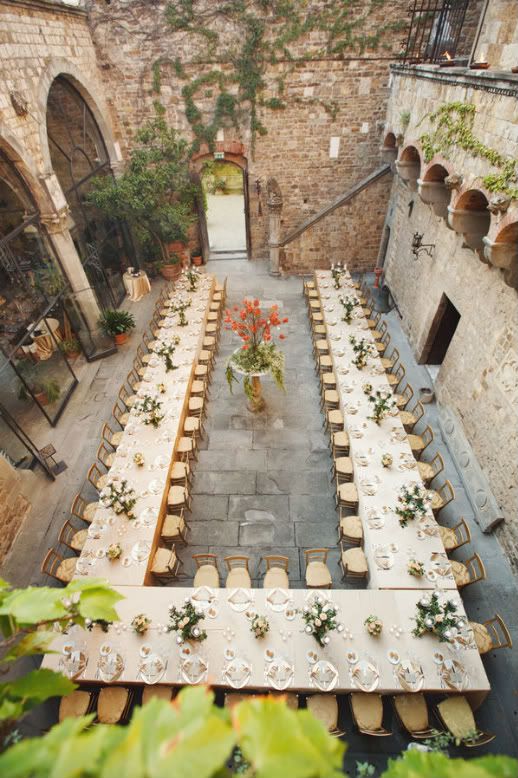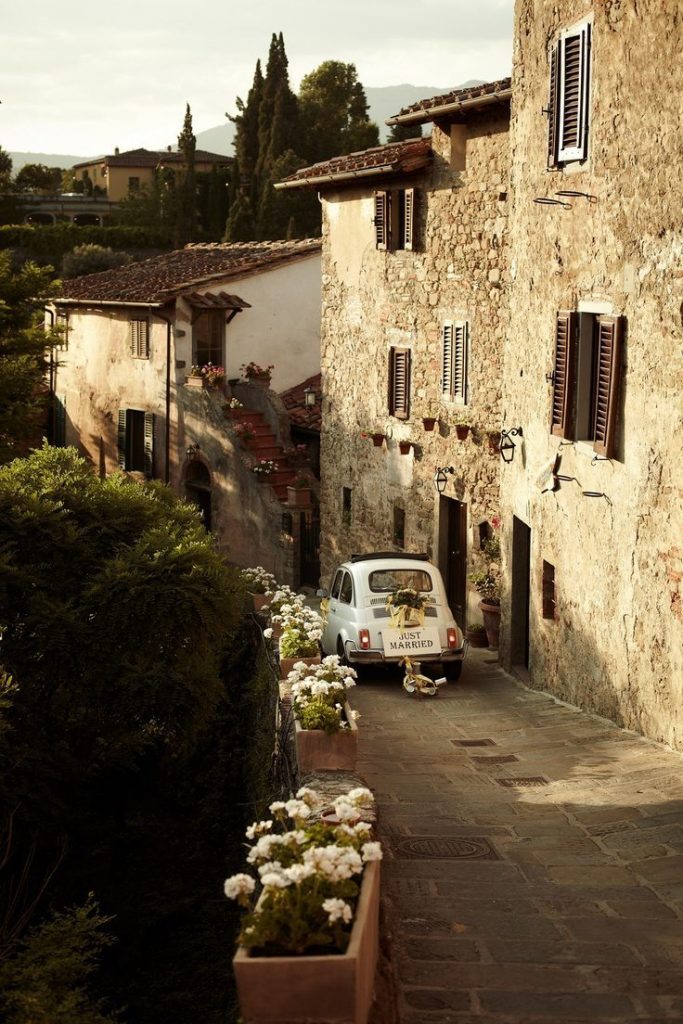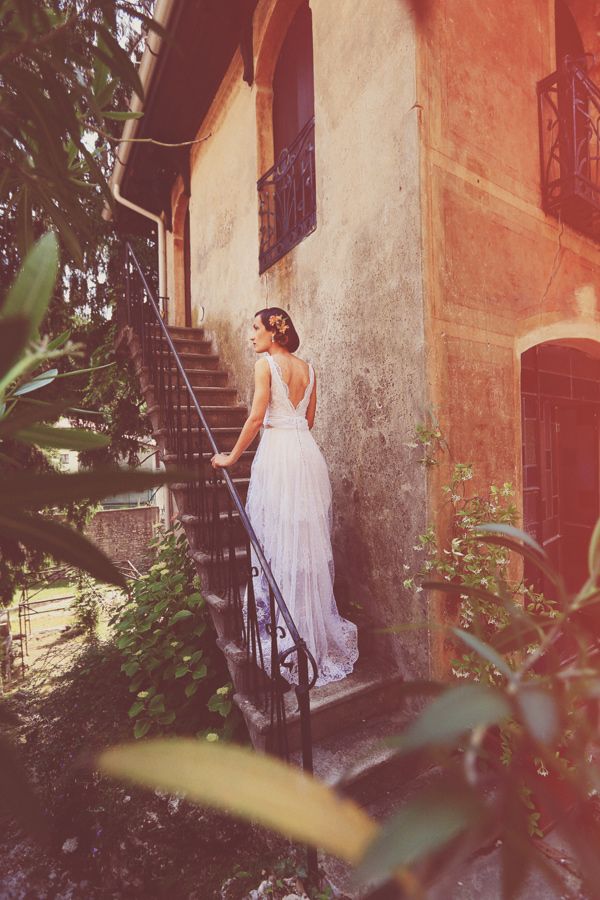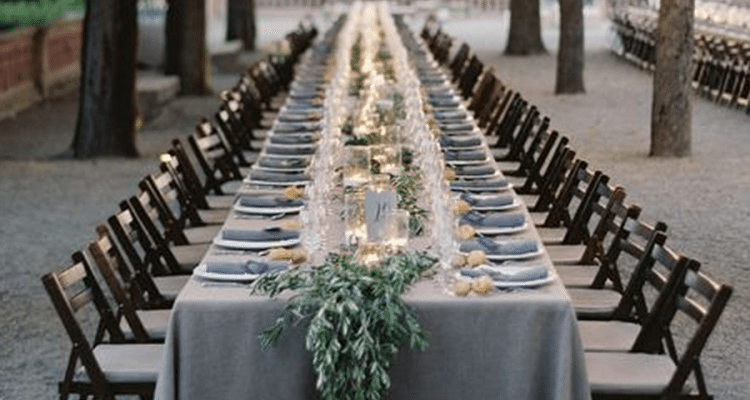In every sense (much like its famous Greek counterpart!), an Italian wedding is a joyous occasion with a big heart. And fortunately for the bride, every aspect of planning it — from strategizing the walk down the aisle to envisioning the last romantic waltz — can be as much fun as the wedding itself.
As with other Western weddings, the whole affair starts with the proposal, when the man offers his bride-to-be a diamond ring as a sign of his promise to marry. Choosing the ring is an immeasurably important task. After all, according to an old Italian tradition, it’s the flames of love that fuel the intense heat that creates a diamond. (Italians show no signs of waning as the most romantic people on earth.) And what’s more, the diamond ring doesn’t just symbolize the groom’s adoration, it also represents the future facets and joys the couple’s life is bound to hold for them.
See Also Shop Italian Wedding Favors | The Ultimate Guide to Italian Wedding Traditions
Another early-stage wedding tradition, this one for the bride, involves gathering up the trousseau and special items for the couple’s new home. Over time, this practice merged with the Dutch bridal shower, but remains a crucial part of any Italian wedding.
A charming pre-wedding custom from Venice is the obstacle race, a humorous tradition seen in other spots on the continent (Russia, for one). You could call it the original version of “The Great Race” … which involves friends and relatives planning a little walk for the bride and groom and laying obstacles in their path. How the couple react to them says a lot about how they might handle the ups and downs of married life (unless, of course, the obstacles include something fairly atypical like a 9 foot wall of frosting).
To set the tone for your Italian wedding, send out invitations that are either traditionally engraved or even handwritten, on linen or parchment paper. Italian wedding invitations set the standard for beauty, and they’re worth getting professionally done. Many are so gorgeous that friends and relatives actually save them as keepsakes for generations to come.

See Also Shop Italian Wedding Favors | The Ultimate Guide to Italian Wedding Traditions
Italian Apparel
No decision is more important than the dress, right? Fortunately, your wedding gown can suit your taste exactly, whether you prefer a sleek and streamlined design from Milan, or an ultra-romantic confection dripping with Venetian lace. The Italian bride typically dons a veil, but skips any gold other than the wedding ring, which of course won’t go on until the ceremony.
Another old Italian tradition is the borsa, a small white satin bag that the bride carries for the guests to fill with small presents and gifts of money.
The Italian Reception: Food, Food and More Food
In Italian wedding never winds down in a few hours — so make sure your venue manager understands that your party’s likely to run late into the night. Typically, Italian weddings involve large crowds (choose a spacious venue) and almost unimaginable amounts of food. Indoors or outdoors are both completely fine, as long as you have enough tables to accommodate all those guests, and the tables are strong enough to hold up all that food and vino.
Also, the couple’s day is likely to start early, with a pre-wedding stop at church in the morning. Then, of course, the ceremony takes place in the afternoon, and then the reception begins … and runs into the wee hours.

Back to the food: traditionally, the couple arranges to serve 13 courses to the guests, but it’s not unusual to serve 14 or more. A traditional menu includes Italian wedding soup (what else?), a soul-food offering made with savory meatballs and rice, and topped off with plenty of Parmesan cheese.
As for entrées, common choices include salmon, chicken or lamb, often served with pasta (naturalmente). Popular choices for dessert include the beloved tiramisu, or panna cotta — an incredibly indulgent cooked cream with a light caramel flavor — that’s often served over the wedding cake. Typically, the drink menu includes espresso, coffee and liqueurs.
When it comes to favors, Italian couples typically choose traditional bomboniere, filled with Jordan almonds in traditional pink or white. Often, bomboniere are tied to the backs of chairs with white satin ribbons, which makes for beautiful presentation.

See Also Shop Italian Wedding Favors | The Ultimate Guide to Italian Wedding Traditions
Décor and Entertainment
It’s rare to see an Italian wedding skimp on the flowers. Typically they show up in abundant numbers, attuned to the season and appearing in vases on almost every available shelf, corner, mantle or free spot around. You won’t often see silk flowers at Italian weddings, though — the bride and her maids usually carry fresh. Best of all, the floral theme carries all the way through to the getaway car … usually it’s blushing blooms that are tied to the bumpers, not beer cans!
Also worth noting are the dancing and music, which will probably go on for hours. Be sure to hire your band well ahead of time, and make sure their repertoire includes traditional Italian numbers as well as more modern selections. At minimum, you’ll need a band well-versed in traditional songs such as the Italian Father and Daughter dance, and the Tarantella.
Of course, the most important ingredient in any Italian wedding is the couple’s joy in taking this big step forward together in the company of those they love and admire, both young and old.


